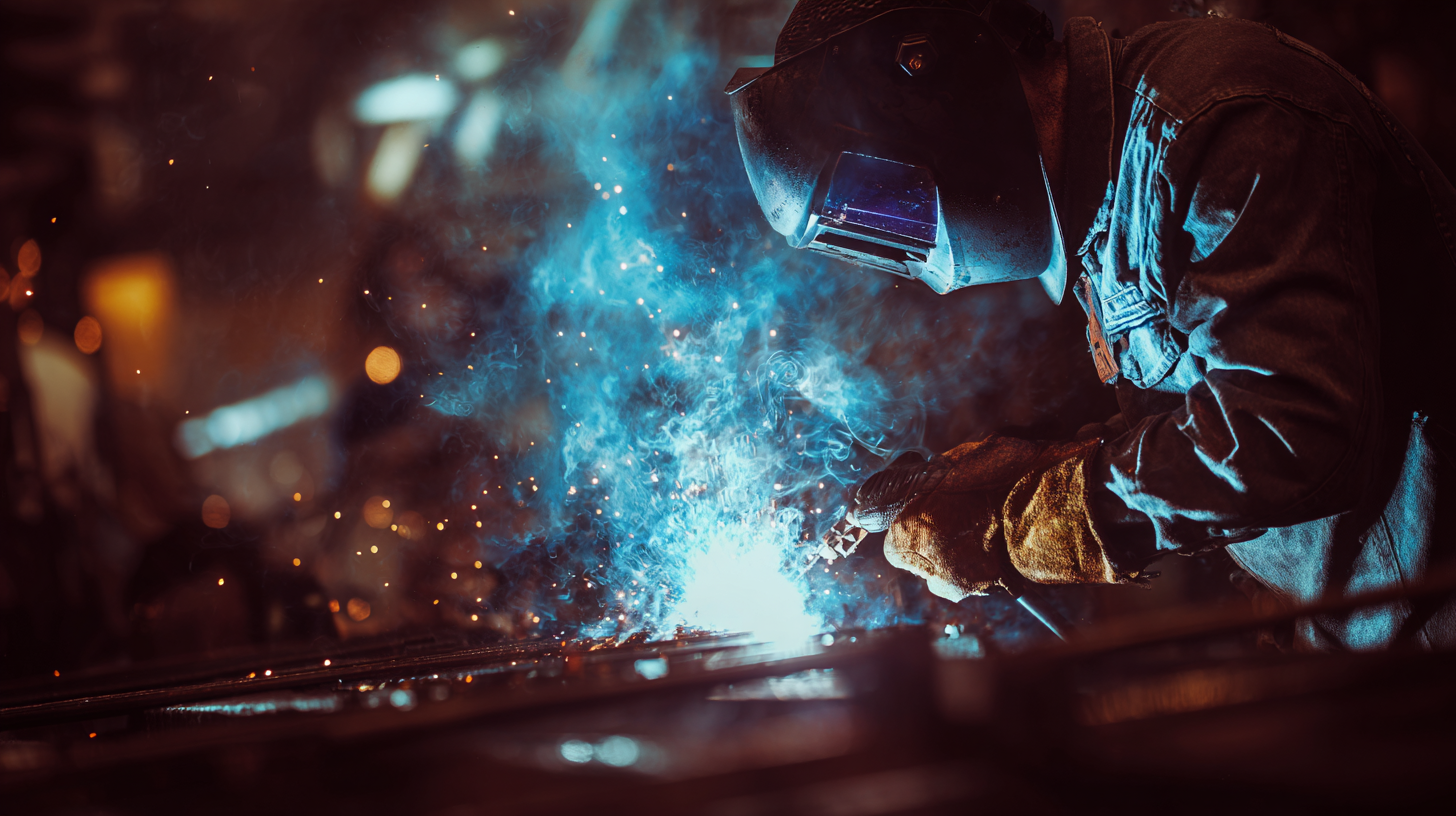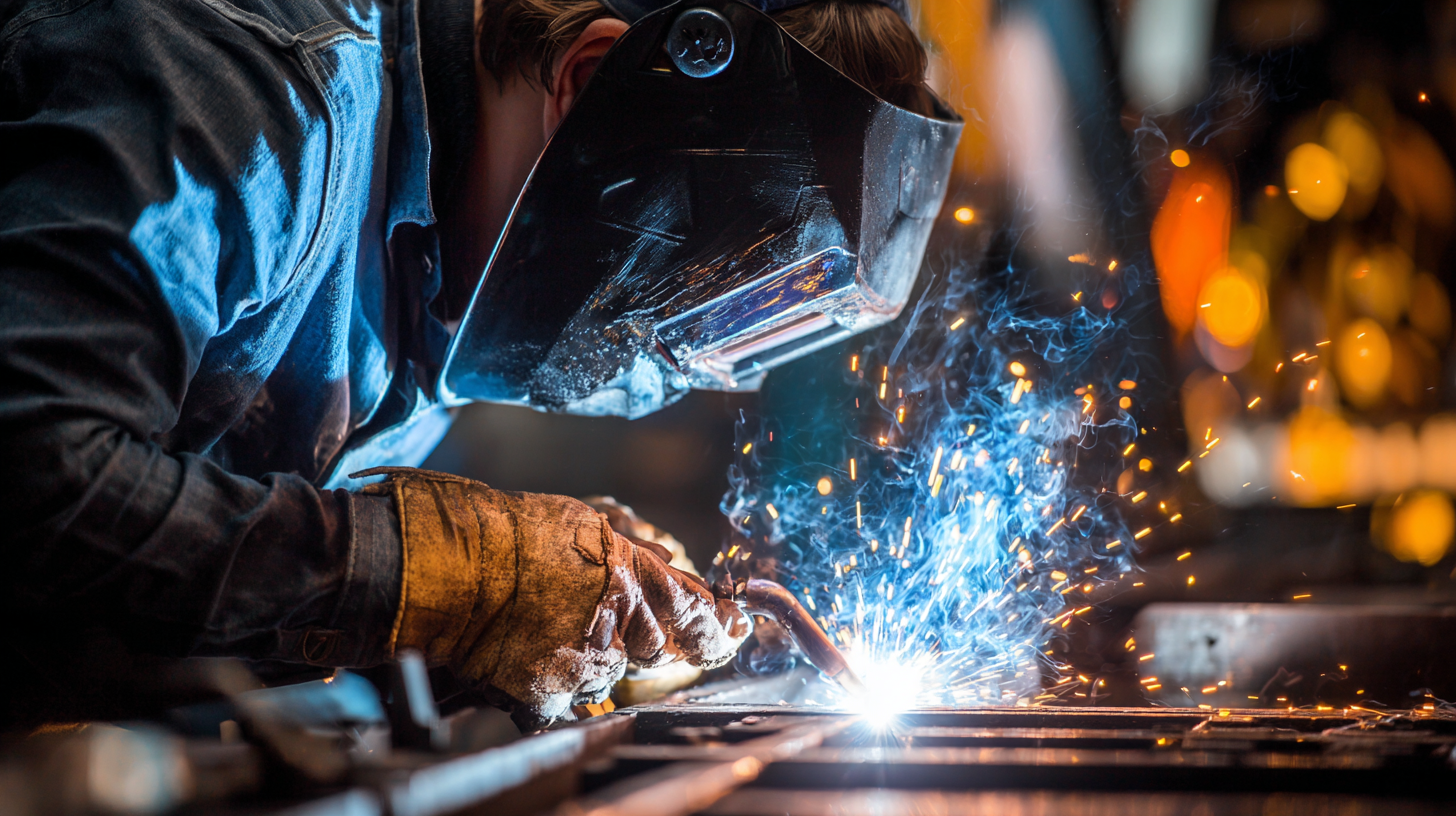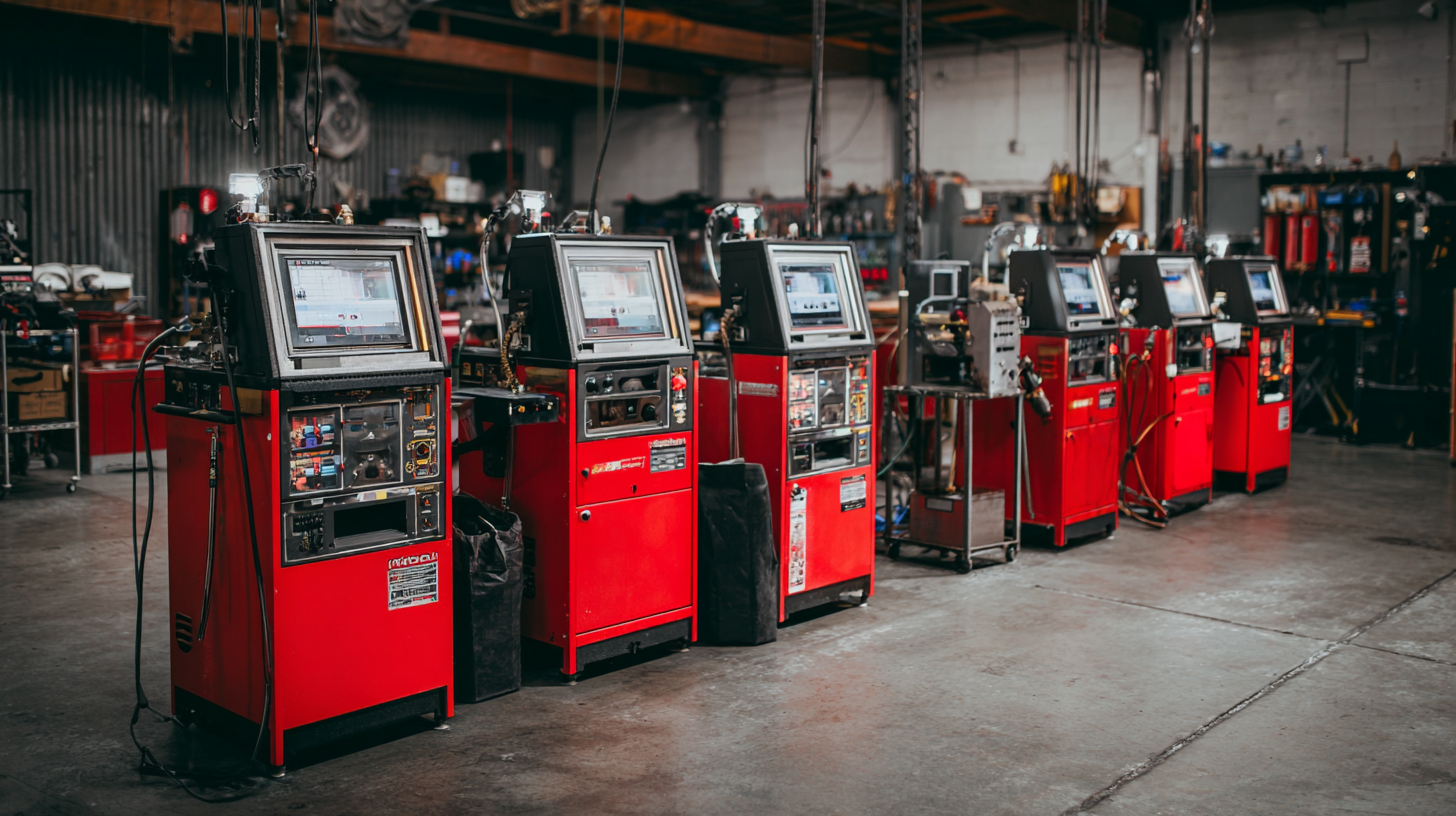In recent years, the welding industry has witnessed significant advancements, particularly with the introduction of modern Welding Cutting Machines. According to a report by Market Research Future, the global welding equipment market is expected to reach approximately $27 billion by 2025, driven by increasing automation and the demand for precision in metal fabrication. These machines have transformed traditional welding processes through enhanced features such as programmability, improved safety protocols, and advanced cutting technologies. With the ability to operate on various materials and thicknesses, modern Welding Cutting Machines are not only increasing productivity but also significantly reducing operational costs.

As industries continue to evolve, understanding the key features of these cutting-edge machines has become essential for professionals aiming to remain competitive in a rapidly changing landscape.
The evolution of welding cutting machines has been significantly influenced by key technologies that enhance efficiency and precision. One prominent trend is the integration of machine learning algorithms, enabling these machines to adapt and optimize their operations in real-time. This capability allows for more accurate cuts and reduced waste, aligning with the industry’s goals of increasing productivity while minimizing costs.
Additionally, the advent of 5G technology is paving the way for smarter welding machines that can communicate seamlessly with other devices and systems on the factory floor. This connectivity not only enhances monitoring and control but also facilitates predictive maintenance, thereby reducing downtime.
Meanwhile, advancements in laser and plasma cutting technologies are providing manufacturers with greater flexibility and options for diverse materials, pushing the boundaries of what modern welding cutting machines can achieve. As these trends continue to develop, the future of manufacturing looks increasingly efficient and interconnected.

In today's industrial landscape, ensuring safety during welding operations is paramount. Modern welding cutting machines are equipped with a range of essential safety features designed to protect operators and enhance the overall work environment. One significant development is the incorporation of advanced interlock systems that prevent equipment from operating under unsafe conditions, such as when protective gear is not worn or when the machine is improperly set up. This feature not only safeguards personnel but also minimizes the risk of operational errors that could lead to accidents.
Another critical safety enhancement in contemporary welding equipment is the integration of real-time monitoring systems. These systems continuously assess various parameters, such as temperature and gas levels, alerting operators to any deviations that could indicate potential hazards. Coupled with automatic shut-off mechanisms, these technologies play a vital role in preventing dangerous situations before they escalate. Furthermore, ergonomic designs with better insulation and noise reduction contribute to a safer working atmosphere by reducing operator fatigue and minimizing exposure to harmful fumes, making the welding process more secure and efficient.
| Feature | Description | Safety Level | Typical Applications |
|---|---|---|---|
| Automatic Voltage Regulation | Maintains consistent voltage to enhance cutting quality. | High | General welding, metal fabrication |
| Integrated Safety Interlocks | Prevents machine operation under unsafe conditions. | Very High | Industrial welding applications |
| Spatter Control Technology | Minimizes weld spatter for cleaner and safer workspaces. | Moderate | Automotive and general fabrication |
| Thermal Overload Protection | Shuts down the machine to prevent overheating. | High | Heavy-duty welding operations |
| Gas Safety Sensors | Detects hazardous gas levels to ensure safe operation. | Very High | Confined space welding |
| User-Friendly Interface | Simplifies operation with clear controls and digital displays. | Moderate | Training and educational settings |
The comparative advantages of plasma and laser cutting machines are becoming increasingly significant in various industrial applications. The global plasma cutting machine market is expected to grow from $699.5 million in 2025 to $905.2 million by 2032, highlighting the technology's rising popularity due to its speed and versatility. Plasma cutting is particularly effective for thick materials, allowing for rapid processing of metals like steel and aluminum, making it a go-to choice for heavy-duty construction sectors.
On the other hand, advancements in laser cutting technology, such as sealed carbon dioxide lasers, are pushing the boundaries of precision cutting. Recent studies emphasize the impact of laser parameters on the quality of cuts, specifically in metals like titanium and aluminum alloys. As manufacturers look for ways to enhance surface and kerf quality, the adaptability and efficiency of laser systems become increasingly appealing. With the CNC machine market projected to reach $77 billion in 2024, the competition between plasma and laser cutting technologies illustrates a dynamic evolution in the manufacturing landscape, where both methods offer unique benefits tailored to specific requirements.
Modern welding cutting machines have significantly evolved over the last few years, largely due to advancements in automation and control systems. According to a report by MarketsandMarkets, the global welding automation market is projected to reach $7.2 billion by 2026, growing at a CAGR of 6.3%. This surge is primarily driven by the need for increased productivity and precision in welding processes. Automation in welding not only enhances the speed of operations but also reduces human error, leading to higher quality welds.
One key feature of modern welding machines is their integration with intelligent control systems, which utilize real-time data analytics to optimize the welding process. Technologies such as programmable logic controllers (PLCs) and advanced sensors allow for adaptive control, which adjusts parameters on-the-fly to ensure optimal performance. A study by ResearchAndMarkets reveals that automation technology can improve operational efficiency by up to 30%, making it a critical investment for industries ranging from automotive to aerospace. As companies seek to stay competitive, the adoption of these advanced welding solutions will be essential for achieving operational excellence and meeting stringent industry standards.
 The modern welding landscape has witnessed significant advancements, particularly in terms of
portability and ease of use for welders.
Today's welding machines are being designed with the mobile welder in mind, ensuring that
professionals can easily transport their equipment to various job sites. Lightweight frames
and compact designs allow for effortless maneuverability without sacrificing performance.
For instance, new models are optimizing their configurations to fit into tight spaces while
delivering powerful outputs, making them ideal for both
onsite repairs and larger projects.
The modern welding landscape has witnessed significant advancements, particularly in terms of
portability and ease of use for welders.
Today's welding machines are being designed with the mobile welder in mind, ensuring that
professionals can easily transport their equipment to various job sites. Lightweight frames
and compact designs allow for effortless maneuverability without sacrificing performance.
For instance, new models are optimizing their configurations to fit into tight spaces while
delivering powerful outputs, making them ideal for both
onsite repairs and larger projects.
Another major enhancement is the user-friendly interface integrated into these machines. Modern welders come equipped with intuitive controls and digital platforms that simplify the welding process, reducing the learning curve for novice welders. Features such as automatic settings and smart technology not only streamline operations but also improve safety, allowing users to focus on the task at hand. With these innovations, welders can expect a more efficient and enjoyable experience, whether they are professionals in the field or enthusiasts working on personal projects.






